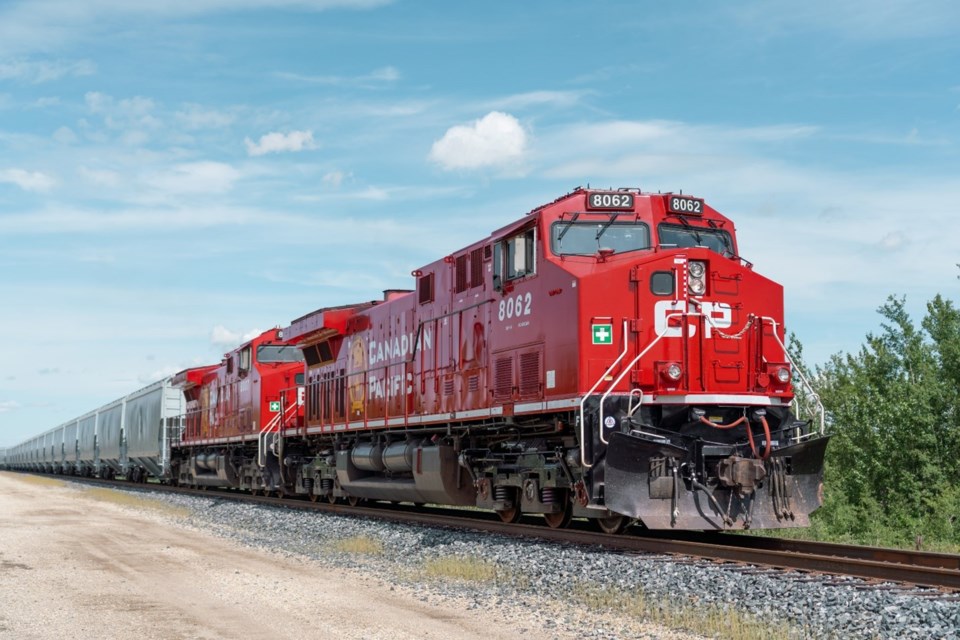OTTAWA—The government of Canada is taking further action to improve the safety and security of Canada’s rail system, especially in light of the impacts of climate change and severe weather on railway operations.
The Minister of Transport, the Honourable Omar Alghabra, announced two new rail safety measures. One will focus on railway-related fire prevention, while the other aims to improve the resiliency of Canada's railway infrastructure against the impact of climate change, such as flooding, landslides, and fire risks.
"In a period where we are seeing the impacts of climate change and extreme weather in Canada, it's important that we do everything we can to mitigate future risks. I am confident that our new rules will have a positive impact by protecting our railways against wildfires in the context of extreme weather. At the same time, the new Rail Climate Change Adaption Program will help railways assess and adopt next generation tools to mitigate adverse issues caused by climate change,” stated the Honourable Omar Alghabra, Minister of Transport.
The first measure announced by the government aims at the prevention of fires on railway property and in nearby communities. Thus, Transport Canada has created new rules for the fire season which runs from April 1 to Oct. 31 and requires that railway companies:
- Reduce train speeds and conduct additional track inspections when temperatures are high to reduce the risk of a derailment caused by track conditions;
- Inspect locomotive exhaust systems more frequently to ensure they are free of any deposits that could pose a fire risk; and, implement a fire risk mitigation plan.
The government of Canada believes that this fire risk mitigation plan is extensive and places the onus upon companies to monitor fire risk levels, manage vegetation, reduce activities that could spark fires, and respond to existing fires. Companies must also engage local governments and Indigenous communities for input on their plans. Monitoring fire risk levels, and minimizing activities that could cause fires, becomes a shared responsibility between government and companies.
The second measure is the government's announcement of the Rail Climate Change Adaptation Program.
According to the government news release, “Its objective is to support research, development, and implementation of innovative technologies, tools, and approaches so as to better understand and address the increasing risks and impacts of climate change on Canada's rail sector.”
In addition, the government indicated that, “The Rail Climate Change Adaptation Program, will provide up to $2.2M in contribution funding to Canadian railways to cost-share research.” The deadline for project submissions from eligible railways will be September 28, 2022.
The Honourable Steven Guilbeault, Minister of Environment and Climate Change, offered his reaction to this announcement. He shared that investing in rail safety promotes the government’s commitment to protecting the environment and preparing all Canadians for climate change; while ensuring the safety and well-being of all families, individuals and communities.
"Investing in rail safety measures, including the Rail Climate Change Adaptation Program, demonstrates the Government of Canada's commitment to building a more climate resilient country today as we are developing our first National Adaptation Strategy. The National Adaptation Strategy will build on existing adaptation efforts in the country, like this one, as we build climate preparedness for all of us living in Canada and ensure the safety and well-being of our families, communities, and the environment well into the future,” stated Guilbeault.
According to CP rail, since 2021, their Climate Strategy initiative has provided guidelines that has resulted in reducing greenhouse gas emissions, and strengthen CP operations ability to adapt to the physical risks of climate change.
“CP’s Climate Strategy is ambitious, which we feel appropriately reflects the urgency of the fight against climate change. We look forward to collaborating with government, industry and research partners to create and test the new solutions required to achieve our targets,” said Keith Creel, CP President and Chief Executive Officer.
